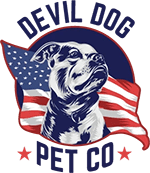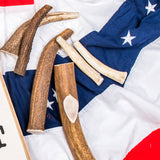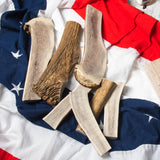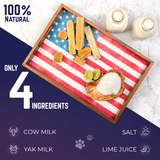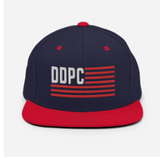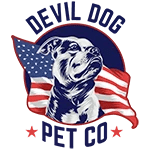Key Takeaways
- Wavy-haired dogs have athletic backgrounds and functional coats shaped by generations of working bloodlines.
- Their wavy coats are designed for activities like water retrieval, field hunting, and enduring various weather conditions.
- Owning a wavy-haired dog presents a leadership challenge from the moment they join your home.
- Their coat symbolizes both their heritage and the responsibility required to care for them properly.
Table of Contents
- Wavy-Haired Dogs & Why Leadership Matters
- Wavy, Curly, or Straight? Science, Structure & Real-World Impact
- Breed Profiles, The Best of Wavy-Haired Dogs
- Devil Dog Approved, Daily & Deep Grooming for Wavy-Haired Dogs
- Tackling Tangling, Mats & Coat Trouble, Owner Accountability in Action
- Health Risks & Solutions, Wavy Coats, Skin, and Sensitivities
- Shedding, Allergies & Clean-Up, Real Veteran Insights
- Feeding for the Best Coat, Nutrition, Chews & Supplements
- At-Home vs. Pro Grooming, What to DIY & When to Call a Pro
- Wavy vs. Curly vs. Straight, Leadership, Maintenance & Cost Comparison
- Choosing a Wavy-Haired Dog for Your Family, Not Just Your Feed
Wavy-Haired Dogs & Why Leadership Matters
Wavy haired dogs aren't just Instagram-ready, they're purpose-built athletes whose coats tell a story of function over form. That gentle wave between your fingers represents generations of working bloodlines bred for water retrieval, field hunting, and all-weather endurance. Yet here's the hard truth: that beautiful coat becomes a leadership test the moment you bring them home.
A wavy coat sits between straight and curly on the genetic spectrum, featuring loose S-shaped bends that create natural water resistance and insulation. The KRT71 gene drives this texture, producing coats that shed moderately, trap less debris than tight curls, but demand consistent grooming to prevent matting. Common wavy-haired breeds include Golden Retrievers, some Poodle crosses, Portuguese Water Dogs, and countless rescue mixes whose heritage shines through that distinctive wave pattern.
At Devil Dog Pet Co., we see every coat as a success story waiting for owner accountability. Your dog's wave pattern, shine, and health reflect your leadership standards, no excuses, no shortcuts. When you step up with the right routine, tools, and mindset, that wavy coat becomes your badge of honor. For wavy-haired dogs between 20-45 lbs or 45-70 lbs, choosing the right grooming and nutrition products is essential for maintaining coat health.
Quick Check: Is My Dog's Coat Wavy, Curly, or Straight?
- Wavy: Loose S-curves, feels soft but structured, sheds moderately
- Curly: Tight spirals, minimal shedding, feels springy and dense
- Straight: No bend pattern, heavy seasonal shedding, lies flat against body
Download the FREE 10-Step Dog Prep Guide
Wavy, Curly, or Straight? Science, Structure & Real-World Impact

The KRT71 gene controls keratin production in hair follicles, determining whether your dog grows straight shafts, tight spirals, or those coveted waves. Dogs with one copy of the curly variant develop wavy coats, while two copies create full curls. This genetic sweet spot produces coats that combine the best of both worlds: easier maintenance than tight curls, better weather protection than straight hair—perfect for playful pups enjoying Puppy Freezer Teething Toys during warm or cold seasons.
Microscopically, wavy hair shafts show irregular thickness and gentle curves that trap air for insulation while allowing airflow to prevent overheating. This structure made wavy-coated dogs invaluable to fishermen, loggers, and hunters who needed companions that could work in wet conditions without becoming waterlogged or overheated during intense activity. For anyone asking “What Do I Need for a Dog?”, understanding coat type is essential, since it directly affects a dog’s comfort, performance, and suitability for specific environments.
| Coat Type | Texture | Shedding Level | Water Resistance | Grooming Frequency |
|---|---|---|---|---|
| Wavy | Soft S-curves, structured feel | Moderate | High | 3-4x weekly brushing |
| Curly | Tight spirals, springy | Minimal | Very High | Daily brushing required |
| Straight | Flat, smooth shafts | Heavy seasonal | Low | 2-3x weekly brushing |
Spot your dog's coat type by running damp fingers through clean, dry hair. Wavy coats spring back into gentle S-patterns, curly coats form tight spirals, and straight coats lie flat without natural bend. Understanding your dog's specific texture drives every grooming decision from brush selection to bathing frequency.
Breed Profiles, The Best of Wavy-Haired Dogs
Breed matters less than fit, that's the Devil Dog mindset. We've seen rescue mutts with gorgeous waves outlive and outperform their purebred cousins because their owners focused on leadership instead of pedigree papers. That said, certain breeds consistently produce those coveted wavy coats that combine beauty with function—while also inspiring discussions about what grooming products are edible for dogs to ensure safe coat care.
Family-Friendly Wavy Companions
Golden Retrievers lead the pack with their flowing, water-resistant coats built for retrieving waterfowl. Expect moderate shedding, weekly deep brushing, and a coat that darkens when wet but dries to that signature gold. Labradoodles (first-generation Poodle crosses) often inherit loose waves that require professional grooming every 6-8 weeks but reward owners with reduced allergens.
Top Working Wavy-Haired Companions
Portuguese Water Dogs sport tight waves designed for ocean work, think natural wetsuit that sheds salt water easily. Their coats demand daily attention but provide unmatched durability. Spanish Water Dogs develop corded waves when left to grow, creating natural dreadlocks that require specialized care but offer ultimate weather protection.
Not Just a Pretty Coat
Wavy-haired breeds typically excel in trainability (8/10), moderate to high energy levels, and strong food motivation, making them ideal candidates for our antler dog chews and yak chews training protocols.
Devil Dog Approved, Daily & Deep Grooming for Wavy-Haired Dogs
No room for neglect, leadership means routine. Wavy haired dogs demand consistent grooming because their S-curved hair structure traps loose undercoat and debris that straight coats naturally shed. Skip three days of brushing, and you're facing mats that require professional intervention.
Your daily arsenal: slicker brush for surface waves, metal comb for undercoat penetration, and detangling spray for stubborn knots. Brush in sections, working from skin outward with gentle, overlapping strokes. Deep combing twice weekly prevents mat formation at the root level where most damage starts. Professional trims every 6-8 weeks maintain coat health and prevent split ends that worsen tangling.
Pair grooming sessions with our elk antler chews, the natural chewing action increases saliva production, which supports skin health from the inside while keeping your dog calm during brushing. A tired mouth means a cooperative grooming partner. For more on the safety and benefits of antlers, see are antlers for dogs a good idea.
5-Minute Daily Grooming Protocol
- Minutes 1-2: Slicker brush entire body, following hair growth direction
- Minutes 3-4: Metal comb legs, chest, and behind ears where mats form first
- Minute 5: Quick paw check and treat reward for cooperation
Tackling Tangling, Mats & Coat Trouble, Owner Accountability in Action

Mats form when loose undercoat wraps around guard hairs, creating tight knots that pull at skin and trap moisture. Humidity, friction from collars, and neglected brushing accelerate mat formation in wavy coats. Left unchecked, severe matting restricts movement and creates painful hotspots underneath.
Prevention beats intervention: finger-comb your dog's coat daily during downtime, focusing on friction zones like armpits, behind ears, and where the collar sits. Apply detangling spray to damp coats before brushing, never brush completely wet hair, which stretches and breaks. For existing mats, work from the outside in using short, gentle strokes with a slicker brush, then follow with a metal comb to ensure complete removal.
Emergency protocol for severe matting: If you can't slide a comb easily through the coat or if your dog shows pain signals, stop immediately. Professional groomers have specialized tools and techniques to safely remove mats without traumatizing skin. Some cases require complete shave-downs, a temporary setback that prevents permanent skin damage. For tips on safe trimming, check out cutting dogs nails that are black: expert guide for safe trimming.
Missed a Week of Brushing, Now What?
Start with a thorough visual inspection. Small mats get detangling spray and patience; medium mats may need careful scissor work; large or tight mats require professional intervention. Never yank or force, you'll make the problem worse and hurt your dog's trust in grooming.
Health Risks & Solutions, Wavy Coats, Skin, and Sensitivities
Wavy coats excel at trapping moisture against skin, creating perfect conditions for hotspots, yeast infections, and bacterial overgrowth. These dense coats hide early warning signs until problems become severe, making regular hands-on inspection critical during grooming sessions.
Weekly skin checks during brushing reveal problems early: red patches, unusual odors, excessive scratching, or hair loss patterns. Run your hands against the hair growth to expose skin fully. Pay special attention to areas that stay damp longest, armpits, groin, and between toes. Proper nutrition supports skin health from within, high-quality protein, omega fatty acids, and natural chewing like our yak chews provide zinc and other minerals essential for coat strength.
| Common Issue | Early Signs | Prevention Strategy | When to Call Vet |
|---|---|---|---|
| Hotspots | Red, moist patches | Keep coat dry, daily brushing | Spreading beyond 2 inches |
| Ear Infections | Head shaking, odor | Weekly ear cleaning, trim ear hair | Discharge or pain signals |
| Yeast Overgrowth | Sweet/musty smell, greasy feel | Thorough drying after baths | Persistent despite cleaning |
Monthly vet wellness checks catch developing issues before they compromise coat quality or comfort. Skin problems often reflect underlying allergies, hormonal imbalances, or nutritional deficiencies that require professional diagnosis and treatment. For more on coat care, see this AKC guide on how to care for a dog's coat.
Shedding, Allergies & Clean-Up, Real Veteran Insights
Wavy haired dogs shed moderately year-round with heavier seasonal drops in spring and fall. Their S-curved hair structure holds loose fur longer than straight coats, reducing daily cleanup but requiring more thorough brushing to prevent accumulation. Expect to vacuum twice weekly during normal periods, daily during shedding season.
Allergy relief comes from protein management, not coat texture alone. Wavy coats trap dander closer to skin, potentially reducing airborne allergens compared to straight-haired breeds that shed constantly. Regular brushing and high-quality nutrition create the optimal environment for minimal allergen production.
Clean-up becomes manageable with the right approach. Vacuum twice weekly with a HEPA filter, wash bedding in hot water monthly, and maintain your dog's oral health with bully sticks that reduce bacteria buildup contributing to overall allergen load. For more on safety, see bully sticks for dogs: are they safe?.
Feeding for the Best Coat, Nutrition, Chews & Supplements

Premium protein drives coat excellence. Wavy-haired dogs thrive on diets containing 25-30% high-quality protein from named sources like deboned chicken, salmon, or beef. Omega-3 fatty acids from fish oil create that signature shine while omega-6s maintain skin barrier function.
Essential nutrients for wavy coat health include biotin for keratin production, zinc for follicle strength, and vitamin E for cellular protection. These work synergistically, deficiency in one impacts the others.
Devil Dog Pet Co chews deliver targeted nutritional support beyond basic feeding. Elk antlers provide calcium and phosphorus for strong hair shafts, while long lasting dog chews supply protein and trace minerals. Bully sticks offer single-ingredient beef protein that supports overall coat density.
Weekly Feeding Plan for Coat Excellence
- Daily: High-protein kibble (25-30% protein minimum)
- 3x weekly: Omega-3 supplement or fish-based meal
- 2x weekly: Natural chew for dental health and mineral intake
- Weekly: Biotin-rich foods like eggs or organ meat
Avoid common feeding mistakes that sabotage coat quality. Over-supplementation creates imbalances, stick to manufacturer recommendations. Table scraps high in salt or sugar disrupt nutrient absorption. Inadequate water intake directly impacts coat hydration and texture. For more on which foods to avoid, see which human foods are toxic to dogs.
At-Home vs. Pro Grooming, What to DIY & When to Call a Pro
Strategic grooming decisions save money while maintaining coat health. Daily brushing and weekly baths handle 80% of wavy coat maintenance at home. Professional grooming every 6-8 weeks addresses precision trimming and deep conditioning beyond amateur skill levels.
| Service | At-Home Cost | Professional Cost | Skill Level Required | Time Investment |
|---|---|---|---|---|
| Daily brushing | $30 (brush) | N/A | Beginner | 10 minutes |
| Full grooming | $150 (tools) | $75-120 | Intermediate | 2-3 hours |
| Mat removal | $20 (dematting tool) | $40-60 | Advanced | 30-60 minutes |
Master one money-saving technique: the sanitary trim. Use blunt-tip scissors to carefully trim hair around paws, ears, and rear end every 3-4 weeks. This prevents matting in high-friction areas and extends professional grooming intervals. For more on coat genetics, see this scientific article on canine coat genetics.
Call professionals for severe matting, skin irritations, or behavioral challenges during grooming. These situations require expertise that prevents injury and reduces stress for both dog and owner.
Wavy vs. Curly vs. Straight, Leadership, Maintenance & Cost Comparison
Coat type determines your leadership commitment level. Wavy coats require moderate daily attention, more than straight, less than curly. Understanding these differences prevents owner overwhelm and ensures proper care standards.
Maintenance time varies significantly. Straight coats need 15 minutes daily for brushing and weekly baths. Wavy coats require 25 minutes daily plus bi-weekly deep conditioning. Curly coats demand 45+ minutes daily with professional grooming every 4-6 weeks.
Annual costs reflect maintenance intensity. Straight-coated dogs average $400 yearly in grooming expenses. Wavy-haired dogs typically cost $600-800 annually. Curly-coated breeds often exceed $1,200 yearly due to frequent professional services and specialized products.
Choose based on honest lifestyle assessment. Busy professionals should consider straight or wavy coats over high-maintenance curly varieties. Families with flexible schedules can handle any coat type with proper planning and commitment.
Choosing a Wavy-Haired Dog for Your Family, Not Just Your Feed

Honest self-assessment prevents shelter surrenders. Wavy-haired dogs need owners who commit to daily grooming, regular exercise, and consistent training. If your schedule can't accommodate 30+ minutes of daily dog care, reconsider timing.
Budget reality check: Beyond adoption fees, expect $1,500-2,500 first-year expenses including quality food, grooming tools, veterinary care, and training supplies. Monthly ongoing costs average $150-250 for food, chews, and routine care.
Download the FREE 10-Step Dog Prep Guide
Frequently Asked Questions
What are the key grooming requirements for maintaining a healthy wavy-haired dog's coat?
Consistent grooming is essential, regular brushing to prevent tangles and mats, bathing with gentle, coat-friendly shampoos, and periodic trimming keep the coat healthy and functional. Using tools designed for wavy coats helps maintain natural waves without damaging the hair structure.
How does the KRT71 gene influence the texture and care needs of wavy-haired dogs?
The KRT71 gene produces the loose S-shaped bends characteristic of wavy coats, creating natural water resistance and insulation. This texture sheds moderately and traps less debris than curly coats but demands regular grooming to prevent matting and maintain coat health.
What are the common health risks and sensitivities associated with wavy-haired dog breeds?
Wavy-haired dogs can be prone to skin sensitivities and coat matting if grooming is neglected. Their moderate shedding can trigger mild allergies in sensitive households, and improper nutrition or poor leadership can exacerbate coat dullness and behavioral issues.
How can proper leadership and nutrition impact the behavior and coat condition of wavy-haired dogs?
Firm, calm leadership paired with balanced nutrition rich in omega fatty acids supports a healthy, shiny coat and reduces behavioral problems. Meeting their physical and mental needs consistently prevents stress-related chewing and coat damage, turning grooming challenges into badges of owner accountability.
